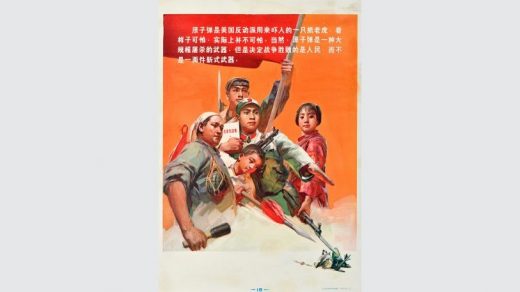These vibrant posters track the rise of China’s economic might
This week, a new exhibit debuted at Manhattan’s Poster House, America’s first museum dedicated exclusively to poster art. In The Sleeping Giant: Posters & The Chinese Economy, graphic design and politics collide. From early 20th-century advertisements (which are cleverly disguised as artistic wall hangings) to graphic design work displayed at the 20th Century Chinese Design Exhibition in 1998, these posters provide a visual history lesson in how China became the economic juggernaut it is today.
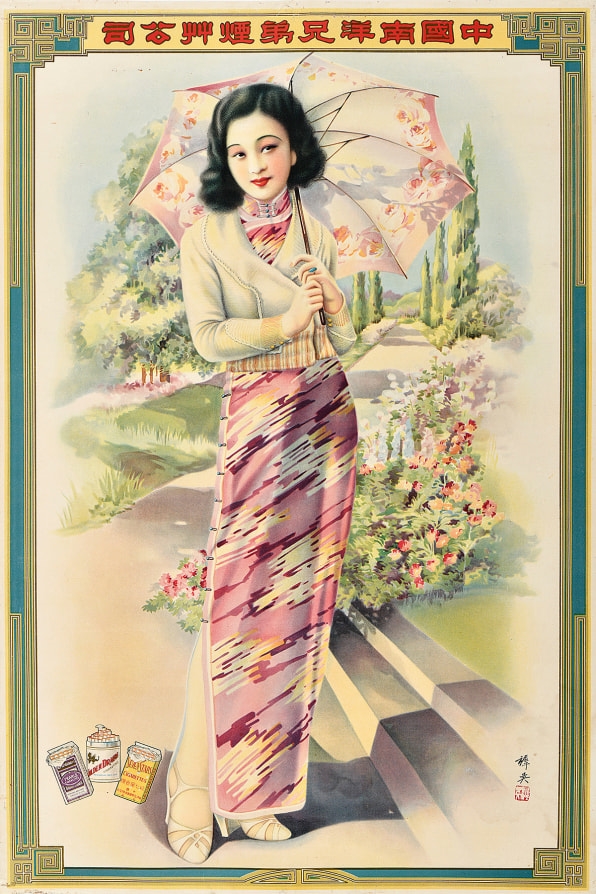
[Image: collection of Marc H. Choko/courtesy Poster House]
In the mid-19th century, China’s economy was gasping for air; Britain, dependent on the East Asian country’s rich resources, enforced trade agreements that predictably worked in their favor. As a result, Chinese poster art was centrally concerned with advertising the exports that made the most money—namely cigarettes and pharmaceuticals. One such poster features a glamorous Chinese woman beneath a parasol, her fashion-forward dress and an ethereal, Eden-like landscape taking up most of the frame. Cleverly, the cigarettes produced by Nanyang Brothers Tobacco Co. are placed diminutively by her feet—placing the emphasis on beauty over the less-attractive product. Other posters in the same style featured domestic cosmetic products and foreign-owned products, like Nestlé condensed milk.
As power in China changed hands throughout the 20th and 21st centuries, posters became an increasingly popular form of propaganda. In the exhibit, viewers see the People’s Republic of China align itself with the U.S.S.R.’s Socialist politics in the 1950s through the use of “Soviet Realism,” a style of idealized art marked by soft brushstrokes and optimistic subjects, in poster design. One striking image makes China’s ideology plain: a Soviet soldier stands alongside a Chinese soldier, their country’s flags overlapping like a mathematically perfect Venn diagram. Through adopting an artistic style popularized by Soviet designers, the posters attempted to convince the Chinese public that socialism would guarantee happiness and economic success.
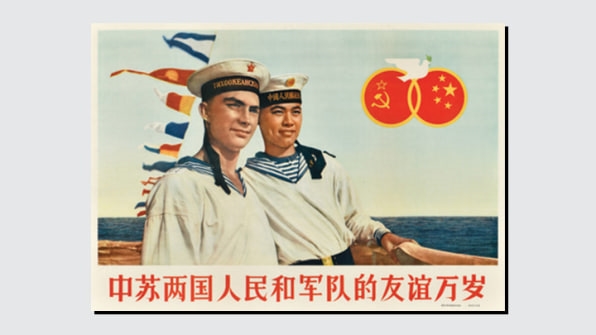
the Soviet Union, c. 1950.
[Image: collection of Marc H. Choko/courtesy Poster House]
Later, in the 1990s, many posters became decidedly more graphic and experimental, eschewing the romantic, agenda-oriented posters of yore, following the death of Chairman Mao and the ascension of a new leader, Deng Xiaoping, who focused on reopening the republic to foreign businesses. Global brands like Nike and Coca-Cola (along with their international audiences) encouraged designers to infuse their advertisements with bold colors and clean typefaces. In a poster that debuted at the aforementioned design exhibition in the late 1990s, a suited man has a flame for a head, suggesting that China’s old political order was incinerated to create a brighter future for the country.
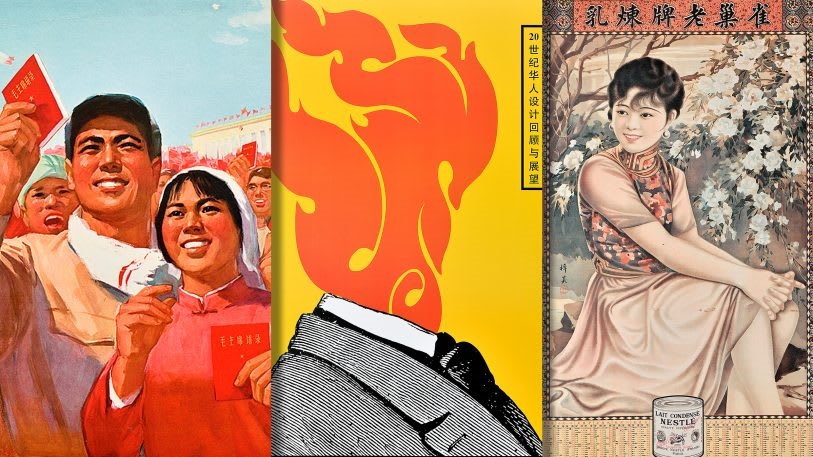
[Image: collection of Marc H. Choko/courtesy Poster House]
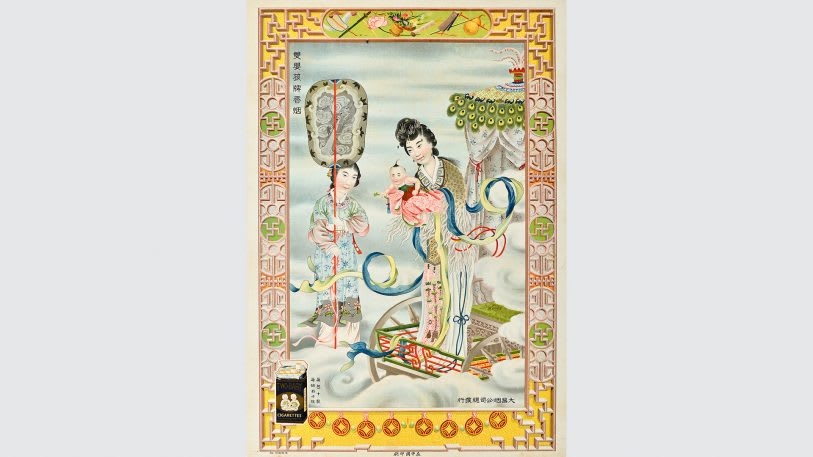
Two Baby Cigarettes c. 1928.
[Image: collection of Marc H. Choko/courtesy Poster House]
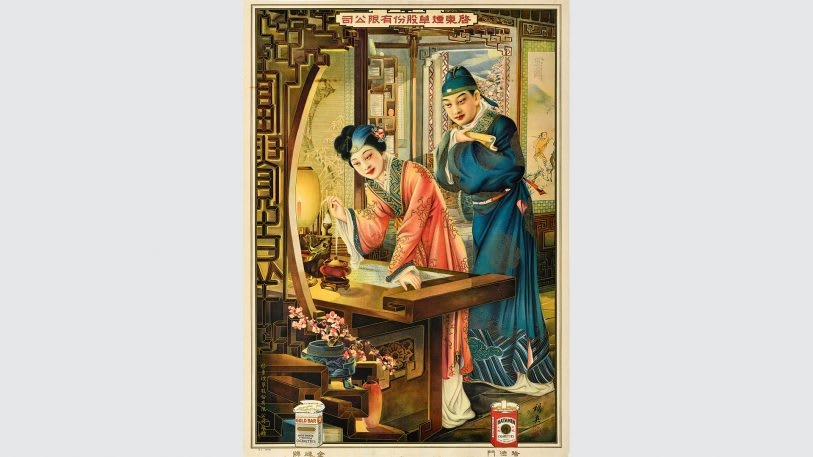
Zhiying Studio, Qidong Tobacco Co. /Gold Bar and Hataman Cigarettes, c. 1928.
[Image: collection of Marc H. Choko/courtesy Poster House]
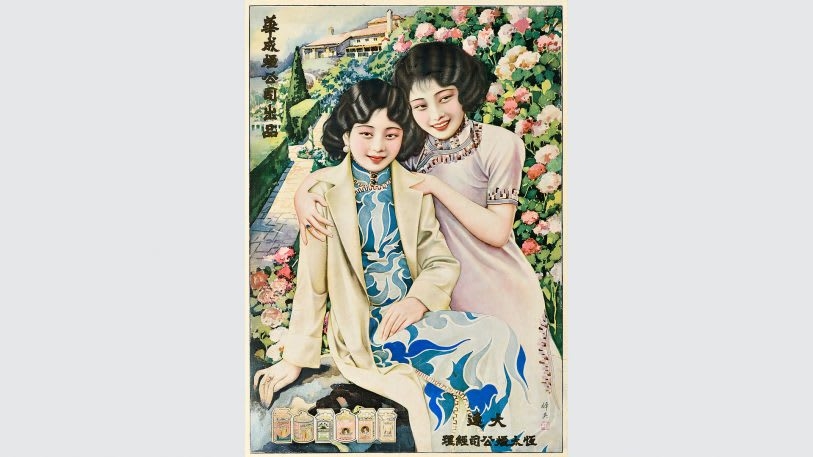
Zhiying Studio, Hwa Ching Tobacco Co.c. 1932.
[Image: collection of Marc H. Choko/courtesy Poster House]
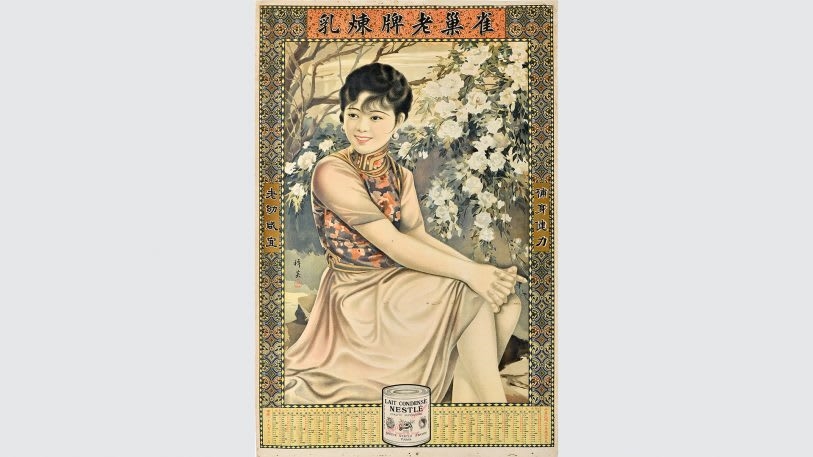
Zhiying Studio, Nestle Condensed Milk, 1931.
[Image: collection of Marc H. Choko/courtesy Poster House]
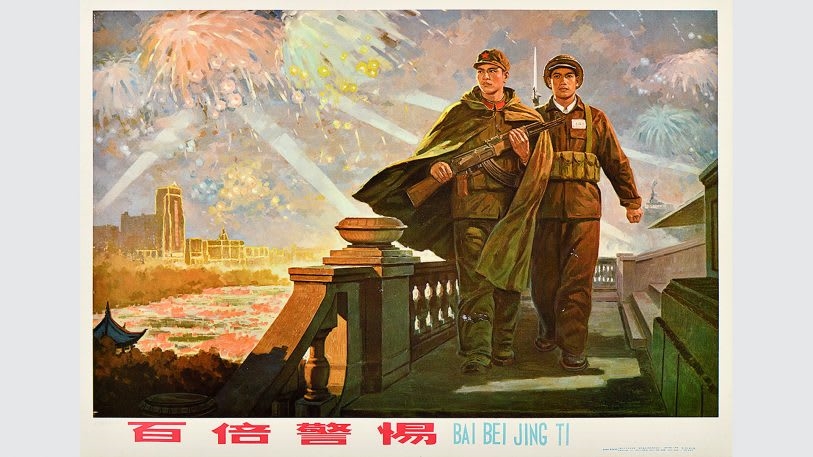
You Longgu, A Hundred Times Vigilant,1973.
[Image: collection of Marc H. Choko/courtesy Poster House]
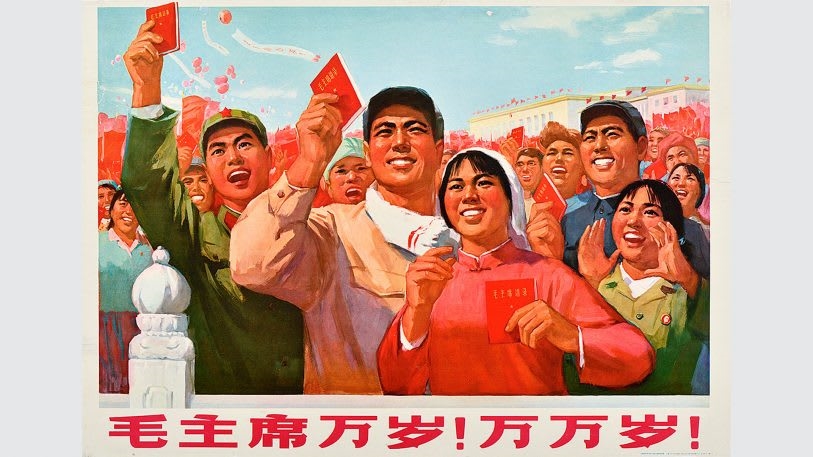
Revolutionary Committee and Propaganda Team of the Workers of the Shanghai Fine Arts School, Long Live Chairman Mao!, 1971.
[Image: collection of Marc H. Choko/courtesy Poster House]
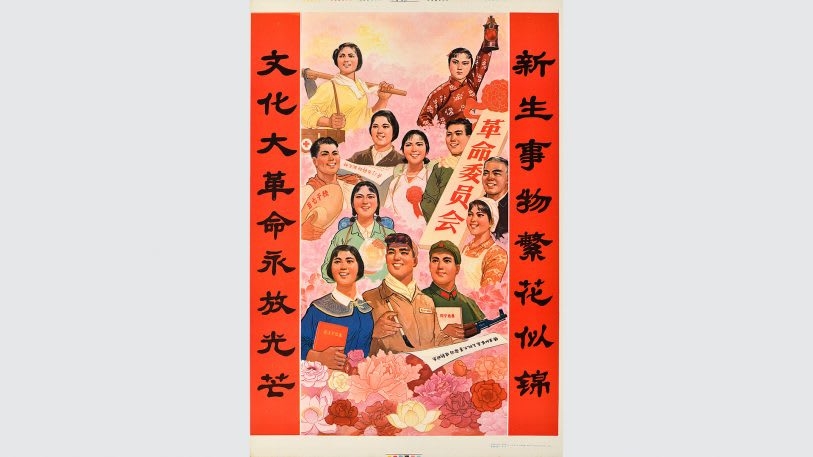
Yang Jiabao & Cai Sheng, Cultural Revolution Glows, 1972.
[Image: collection of Marc H. Choko/courtesy Poster House]
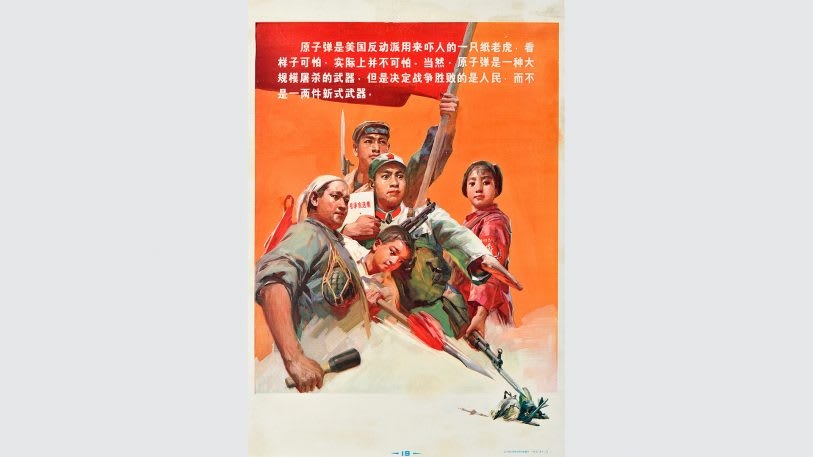
The AmericanNuclear Bomb is Nothing but a Paper Tiger,1972.
[Image: collection of Marc H. Choko/courtesy Poster House]
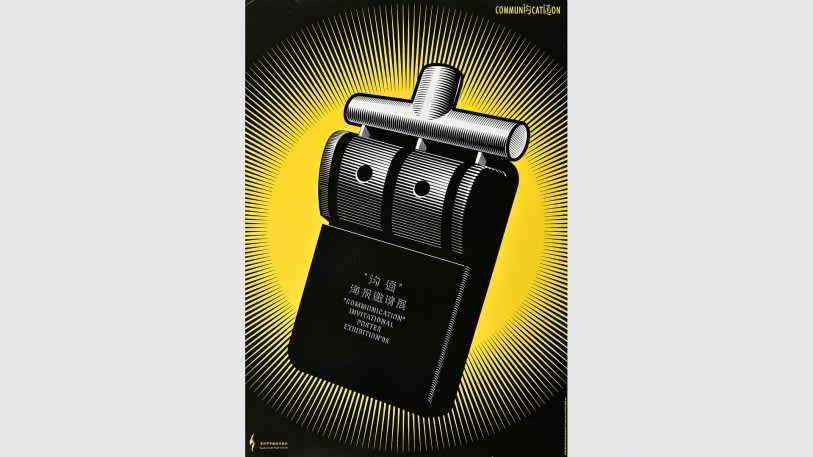
Chen Shaohua, Communication International Poster Exhibition, 1996.
[Image: collection of Marc H. Choko/courtesy Poster House]
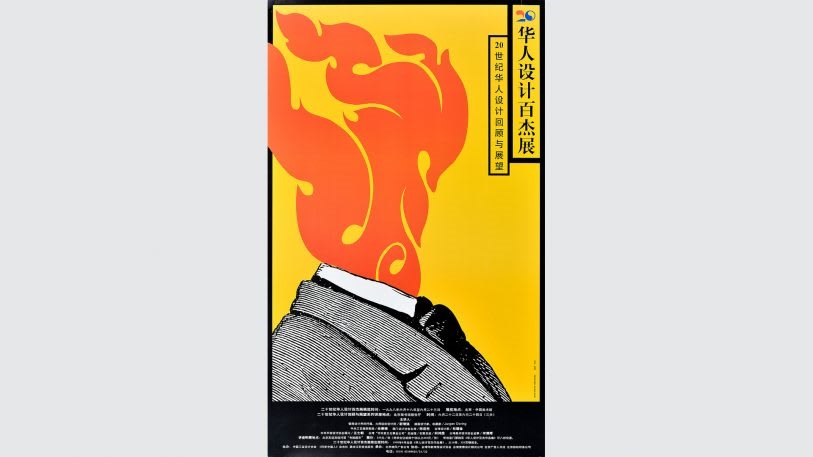
Zhang Qing, 20th Century Chinese Design Exhibition /Past and Future,c. 1998.
[Image: collection of Marc H. Choko/courtesy Poster House]
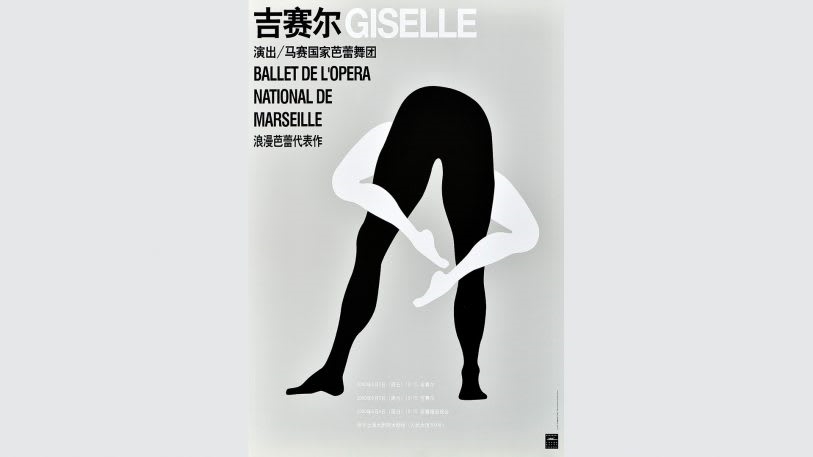
Shen Haopeng, Giselle, 2000.
[Image: collection of Marc H. Choko/courtesy Poster House]
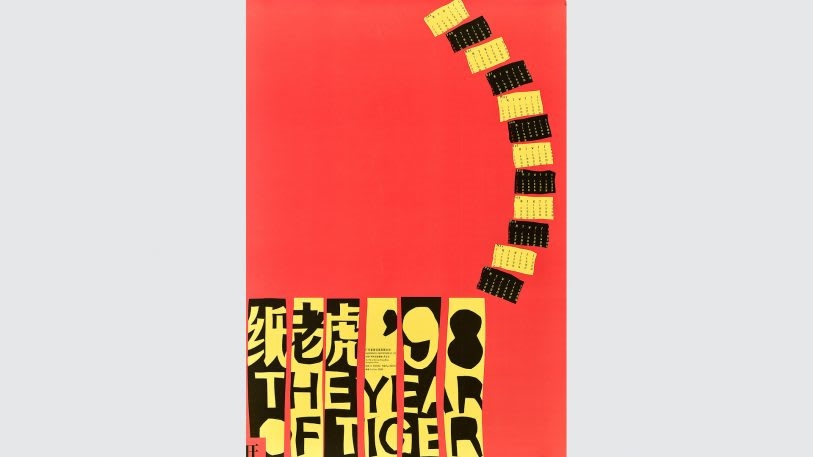
Wang Xu, 98 The Year of Tiger, 1998.
[Image: collection of Marc H. Choko/courtesy Poster House]
Fast Company , Read Full Story
(34)

